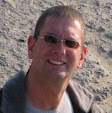Telcel is apparently the best local SIM option for visitors to Mexico. There's some confusion about how best to acquire one, when reading through the various posts. Here's my experience in acquiring a SIM with the 26-day MX$150 prepaid plan (comes with unlimited calling and texting to/from Mexico/USA/Canada as well as 3GB of data that is usable in those same countries):
First I walked into a Telcel company store (not a store that displays a Telcel sign but is just a reseller). Asked about buying a SIM along with the 26-day plan. Was quoted $150 for the plan and another $150 for the SIM. Thanked and left.
Walked into an OXXO store (there's one pretty much at every other street corner). Was quoted $29 for the SIM, but the lady didn't know anything about the 26-day plan. She insisted that I must load a minimum of $50 to be able to activate the SIM, so a total of $79 with a useless plan. Thanked and left.
Walked into another Telcel company store. The cashier told me that I could buy the 26-day plan. But first I would need to go to another window to buy a SIM, for which I would pay $116. So I asked "can I buy the SIM at OXXO and bring it to you to load the 26-day plan?" -- "Yes".
Walked out to a different OXXO next door. Was quoted $30 for a SIM. Here too I was told I should load the minimum of $50 but I said no, paid the $30 and left with the SIM.
Went back to the Telcel company store, handed the cashier the SIM packet (the phone number is printed on the cover) and she loaded on the 26-day plan for $150.
So a total of MX $180.
I had a lot of spare time so I did this for fun and to satisfy my curiosity as to the cheapest way to achieve this. Of course it would be far easier to just pay whatever asked at the first opportunity - it's really just a few dollars of difference.
Even at the maximum of MX$300, it's still just a third of what people pay for cell service in USA. So it makes sense what I read in posts, that people who travel to visit USA/Canada from Mexico or via Mexico, buy a Telcel SIM and a plan in Mexico before proceeding north, and then use it there.

 Thereafter (see
Thereafter (see  Five years later, in June 2000, my parents came to the USA for the birth of their grandson (my sister lives in California). I thought to myself, my dad has never been back to the Dominican Republic since we had left it 30 years prior, and he turns green with envy every time I go there. He is now just a 7-hour flight away from there, and I have all these TWA frequent-flyer miles sitting in my account.
Five years later, in June 2000, my parents came to the USA for the birth of their grandson (my sister lives in California). I thought to myself, my dad has never been back to the Dominican Republic since we had left it 30 years prior, and he turns green with envy every time I go there. He is now just a 7-hour flight away from there, and I have all these TWA frequent-flyer miles sitting in my account.






 I was 9 years old when we left the Dominican Republic. We had only been there two years, but to a kid that young, it seemed like a really long time. I spoke fluent Spanish then, but after just a few months back in Israel with no Spanish-speaking people around, I quickly forgot most of it. Nowadays I can just get by with the very little that's left in memory.
I was 9 years old when we left the Dominican Republic. We had only been there two years, but to a kid that young, it seemed like a really long time. I spoke fluent Spanish then, but after just a few months back in Israel with no Spanish-speaking people around, I quickly forgot most of it. Nowadays I can just get by with the very little that's left in memory.